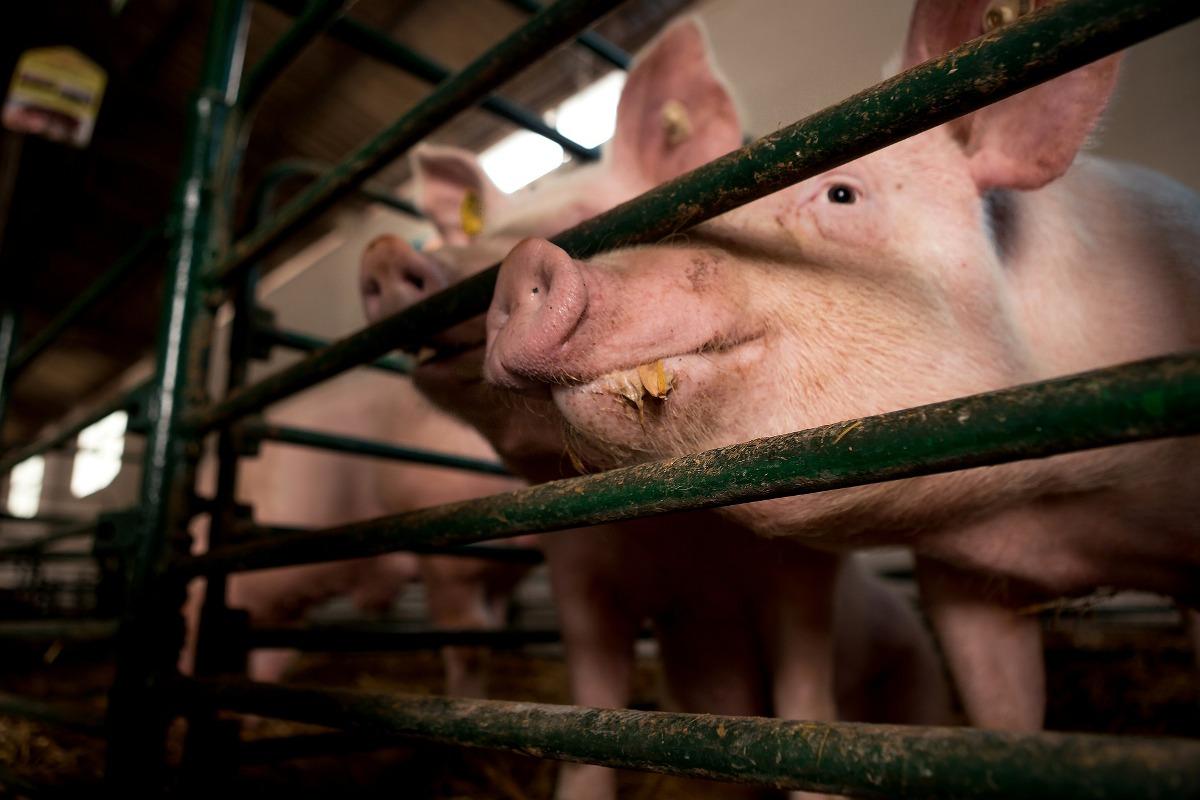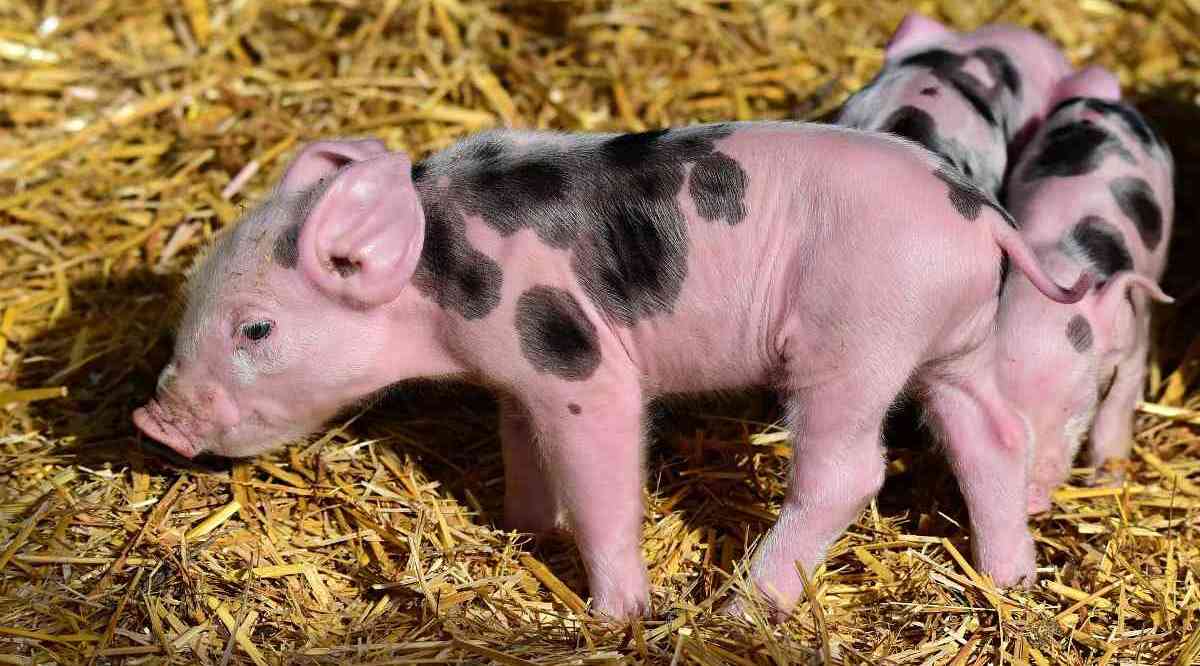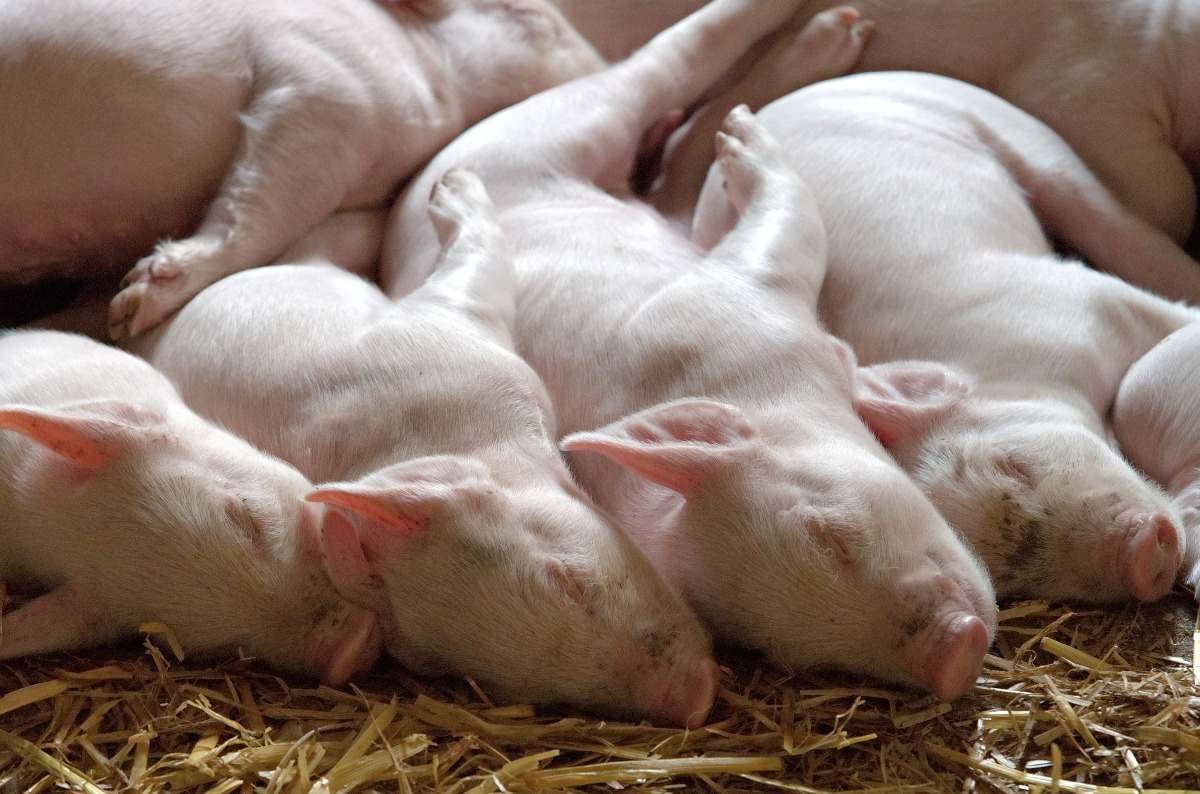Introduction: Hello livestock farmers, we are back with a profitable intensive pig farming method, facts, advantages. Pigs are naturally omnivorous and are normally fed a combination of grains and protein sources (soybeans, or meat and bone meal). Larger intensive pig farms can be surrounded by farmland where feed-grain crops are grown. Thus, piggeries are reliant on the grains industry. Pig feed may be packaged, in bulk or mixed on-site.
A guide to intensive pig farming adavantages, disadvantages
The intensive piggery system, pigs are confined in individual stalls, allows each pig to be allotted a portion of the feed. The individual feeding facilitates individual medication of pigs through the feed. This has significance to intensive farming methods, as the proximity to other animals enables diseases to spread rapidly. To prevent diseases and encourage growth, drug programs such as vitamins and antibiotics are administered preemptively.

These pigs get sprayed with an excessive amount of chemical pesticides and usually given chemical hormones to boost growth. The pigs are farmed intensively in systems where they are caged, mutilated and unable to express their natural behaviors. Intensive pig farming is a cost-effective, space-conscious method of making the most profit out of the animals that you have. It works in many countries and is a good method of ensuring that all equipment, storage space, and the animals themselves are geared towards helping the farmer realize his or her income potential.
Indoor intensive housing for pig farming
Indoor intensive housing is mainly referred to as factory farming, raising pigs in confinement at high stocking density. This intensive system for pigs from birth to weaning and for lactating and weaned sows can hold a large number of pigs. And it is managed on an all-in all-out basis, keeping pigs of similar ages in groups in a common environment. Current housing systems are continuously evolving to develop herd health, welfare, and productivity. Food and water are supplied in place, and artificial methods are often employed to keep pig’s health and promote pigs growing, such as therapeutic use of antimicrobial agents, vitamin supplements and growth hormones.
Choosing the right kind of pigs
Choosing the right kind of pigs for the farm is essential. If you are breeding the pigs for meat, then a type such as the large white is excellent since not only does it provide great quality meat, it also breeds well and the farm will be replenished quickly. Since it is not a rare breed, it is inexpensive to purchase initially.
Ventilation control in intensive pig production
Intensive pig production facilities need ventilation systems to regulate the moisture and heat produced by the pigs, as well as air pollution produced by dung, feed and the pigs themselves.
You should not miss the Loans and Subsidies on Beekeeping in India.
Purchasing the pigs
A budget should be set before you consider purchasing your pigs. It is extremely easy to get carried away, especially at an auction and spends more than you intended or buy more pigs than you have space or permission for. If buying privately, ensure that the pigs are thoroughly checked for disease intensive pig farming mainly involves pigs being housed in close quarters, and disease will spread quickly, decimating your herd.
Piglets
Indoor pigs contain a tendency to bite their own tails, causing infection and high vet’s bills. Many farmers prefer to dock the tails of the piglets when they are born to prevent this from happening.

Housing requirements of pigs
Intensive pig housing mainly represents the largest capital outlay of pig-breeding. Planning, not only of efficient buildings but also of economical buildings, is extremely important. The main aim of pig-breeding must be to produce the maximum amount of quality meat in the shortest possible time. The efficiency of pig housing in intensive housing units is strongly influenced by temperature control and ventilation. Experiments have shown that space, the length of feeding troughs and the comfort and facilities of pens, play an important role in optimum pig production. Pigs have environmental and climate requirements during different stages of growth. In order to reach their full potential, boars and sows particularly need special attention as far as prevention of high ambient temperatures and other stress factors are concerned.
Intensive pig farming method
Intensive piggeries are usually large warehouse-like buildings or barns with little exposure to sunlight or the outdoors. Pigs are entitled to less than one square meter of space each. Indoor pig systems allow more pigs to be monitored than traditional methods, ensuring minimum fatalities, lowered cost, and increased productivity. Buildings are ventilated and the temperature regulated.
Intensive pig farming is generally undertaken by commercial farmers in state-of-the-art housing where all water points are mechanized. They could have heating and cooling systems, and numerous different compartments are required for the different categories of pigs.
Most domestic pigs are susceptible to sunburn and heat stress and all pigs lack sweat glands and cannot cool themselves. Pigs have a limited tolerance to high temperatures and heat stress could lead to death. Maintaining a specific temperature within the pig-tolerance range maximizes growth and growth-to-feed ratio. Indoor piggeries have allowed pig farming to be undertaken in countries with unsuitable climate or soil for outdoor pig raising. In an intensive operation, pigs no longer need access to a wallow or mud, which is their natural cooling mechanism. Intensive piggeries control temperature through ventilation systems.
The pigs are housed in intensive systems varies, depending on economic viability, open time for sows can be spent in indoor pens or outdoor pens. The pigs begin life in a farrowing or gestation crate, a small pen with a central cage, and designed to allow the piglets to feed on their mother, the sow, preventing her from moving around, crushing her children, and reducing aggression. The crates are small that the pigs cannot turn around.
You may also like the How to Build a Fish Pond With Concrete.
In intensive farming systems, sows or mother pigs are often confined in narrow crates, unable to move freely, when they are pregnant and nursing their piglets. The piglets reared for meat are mutilated, without anesthetic, and kept in concrete sheds without bedding. This shift away from traditional pig farming to large-scale intensive systems has resulted in important concerns for the welfare of millions of pigs throughout the world. Unlike other livestock farming, such as sheep or cattle on rangelands or on a pasture system, pigs could be raised in a comparatively far smaller area. In intensive pig farming animals are generally kept in close proximity to each other in a housing system.
This option is suited to farmers aiming to supply the meat market. The idea is to try growing the pigs to slaughter weight as soon as possible to save on long-term feed costs. The quicker you can obtain the pig to slaughter weight, the less money you will spend on feed.
Sow stalls
Pregnant sows are caged in rows of narrow stalls. On some pig farms, they are tethered to the stalls using a heavy chain. Unable to express their natural behaviors, they make pointless, repetitive motions such as biting the bars or attempting to root at the concrete floor. Experts regard as clear signs of animal suffering. Prolonged confinement affects their health and fitness, often causing lameness, foot injuries, weakened bones, and painful abrasions.
Farrowing crates
When ready to give birth, the sow is moved to the equally restrictive farrowing crate and this is so tiny that it cannot move other than to stand up and lie down. A strong instinct to build a nest for piglets is completely denied. Once piglets are born, unable to mother them properly.
Early weaning
The sow is kept in the crate until the piglets are weaned at 3 to 4 weeks of age (compared with 13-19 weeks naturally). This premature removal from their mother leads to severe stress, withdrawal of their mother’s milk causes increased susceptibility to stomach infections. Just a few days later, the sow is re-impregnated artificially to the sow stall. This maximizes the number of piglets produces each year to over 20 (compared with 6-8 naturally).
Incase if you miss this: Rabbit Farming Business Plan.

Barren fattening pens
Selectively bred for rapid weight gain and the piglets are fattened for meat for 4 to 6 months. They are kept in conditions of severe deprivation in small, overcrowded, dirty pens. They can live on bare concrete or slatted floors with no straw or other bedding material. They are unable to carry out natural behaviors that are rooting, foraging and exploring.
Space in intensive pig farming method
How much space you will need mainly depends on how many pigs you want to be able to house.
Antibiotics
Due to the restricted space and ease of the spread of disease including salmonella, many farmers add vet prescribed antibiotics to their pigs’ feed, to ensure a longer life and improved health. It costs more initially but can save you money in the long run, as disease-ridden stock will have to be destroyed.
Permission or license of intensive pig farming
Keep in mind that you may want to apply for planning permission to erect a piggery in agricultural land. This procedure can take many months, so applying as soon as possible is the best idea.
Security
Keeping those piggeries safe is very important, particularly if this is your livelihood. Secure housing, fencing and also CCTV systems are strongly recommended.
Health aspects in intensive pig farming
Diseases in pigs can be divided mainly into two categories:
- Specific infections and contagious diseases brought into the unit, or already present in a latent form.
- Secondary health problems, which develop or promoted by environmental factors, and therefore more dependent on management and housing.
The handling of waste in intensive pig production
When a factory complex is built, a strategy is always devised to handle its waste or by-products in such a way that it can be put to use, or treat it in such a way that it does not become a nuisance. The same principle must apply when planning and building a pig production unit because the removal of manure forms an integral part of the activities in such a unit. Steps must be taken to combat problems associated with waste products. At the same time, the national and provincial health regulations have to be obeyed, while useful applications of the waste material must be investigated
Issues of intensive pig farming
Even in a more basic intensive farming operation, a few challenges remain as of the cramped system in which animals are farmed. Some issues such as management, hygiene and disease outbreaks need careful thought. Buying balanced pig feed will be more expensive up front, but pigs will grow faster and be marketable earlier. At the same time, an issue such as daily waste removal from housing requires more labor. Heaps are turned daily to dry and can later be bagged and sold to gardeners.
Advantages of intensive pig farming
- The farmer confines all the pigs within a building and does not allow them to move out. He raises the pigs inside the sties on concrete or sawdust.
- The farmer provides feed, water, and veterinary services, routinely, insufficient measure. The system saves labor, provides the condition for management standards and simple control of internal parasites. There is protection from inclement weather, predators and thieves.
- The feeding efficiency is high, thus, the growth rate is very high.
- The farmer can have 24/7 access to the pigs for feeding, animal health and to check their growth rate.
- Disease prevention and biosecurity are easy to factor into the operation.
- As the pigs do not have to expend energy looking for food, reserve most of the energy for their growth and development. Therefore, pigs confined in an intensive system reach their market weight earlier.
- The hygiene and sanitation around the pigs can be controlled to meet the highest standards.
You may be interested in Duck Farming Basics, Housing, Feeding, Breeding.
What is the smell like on these types of intensive farms? I feel like this is a big point to consider
The article was very informative and efficient. Can you recommend an institution in South Africa where one can go and learn more about pig-farming?
I want to farm pigs for meat supple, and that will require knowledge. Thank you
This article is wonderful
Thank you for effective response